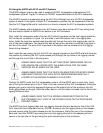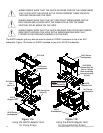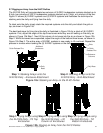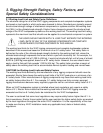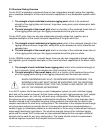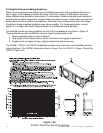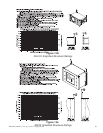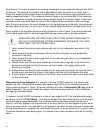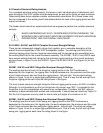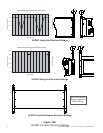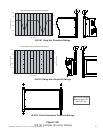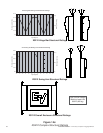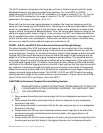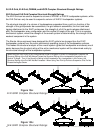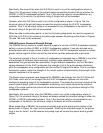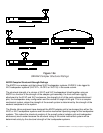
ELECTRO-VOICE
®
X-Line Very Compact
TM
Rigging Manual 40
3.4 Complex Structural-Rating Analysis
For a complete structural-rating analysis, the forces in each individual piece of attachment hard-
ware throughout the XLVC system must be determined, as well as the forces on each enclosure.
Determining these forces requires complex mathematical calculations. All of these forces must
then be compared to the working-load limits detailed below for each of the rigging points and the
overall enclosures.
The reader should consult an experienced structural engineer to perform the complex structural
analysis.
WHEN SUSPENDING ANY XLVC LOUDSPEAKER SYSTEM OVERHEAD, THE
WORKING-LOAD LIMITS MUST NEVER BE EXCEEDED FOR EACH INDIVIDUAL
RIGGING POINT, AND THE OVERALL ENCLOSURE.
3.5 XLD281, XLE181 and XS212 Complex Structural-Strength Ratings
There are two independent strength ratings that, together, give a complete description of the
overall structural capabilities of the XLVC loudspeaker system - the working-load limits of the
individual rigging points (the two hinge-bar assemblies and the two swing-arm assemblies) and
the working-load limit for the overall enclosure assembly. The XLD281, XLE181 and XS212 each
have unique working-load-limit ratings for the individual rigging points and the overall enclosure,
and are shown in Figure 14a for the XLD281, Figure 14b for the XLE181 and Figure 14c for the
XS212.
XLD281, XLE181 and XS212 Hinge-Bar Structural-Strength Ratings
The working-load limit of each of the hinge-bar rigging points on the XLVC enclosures is
dependent on the hinge bar, the rigging tube, the quick-release pins, the enclosure and the angle
of pull. Each enclosure has two hinge-bar rigging points - left and right. The structural ratings
shown in Figure 14 are for a single rigging attachment point. That is to say, the left and right front
hinge-bar rigging points each have the rating shown in the figure.
The front-to-back structural-strength ratings for the front rigging points cover a full 360° of rotation.
Although it is not possible to put the front hinge bars into tension over 360°, it is possible for the
hinge bars to go into compression with some array configurations. Therefore, the 360° rating is
necessary to accommodate both tension and compression. It should also be noted from Figure 14
that the front hinge bars are only rated for side-to-side pull angles of a maximum of ±5°.
XLD281, XLE181 and XS212 Swing-Arm Structural-Strength Ratings
The working-load limit of each of the swing-arm rigging points on the XLVC enclosures is
dependent on the swing arm, the rigging tube, the quick-release pins, the enclosure and the angle
of pull. Each enclosure has two swing-arm rigging points - left and right. The structural ratings
shown in Figure 14 are for a single rigging attachment point. That is to say, the left and right rear
swing-arm, rigging points each have the rating shown in the figure.



